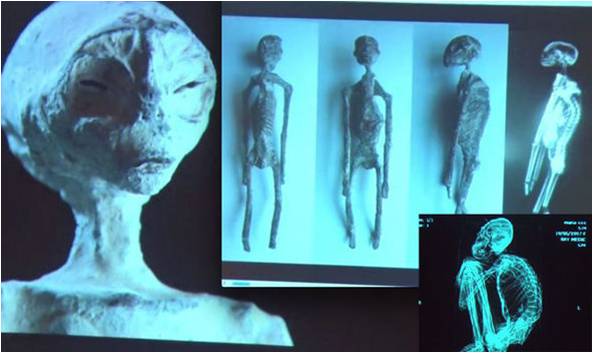Extraterrestial being and UFO in art trough the history part 1
Reptilian
Iraq - 5,000-4,500 BC.
 |
Common trought that civilization started in Iraq, in ancient Mesopotamia with the great civilisation of Sumeria. However, but also many pre-Sumerian 7,000-year-old artefacts were found, depicting humanoid figures with lizard characteristics. The Ubaidian culture is a prehistoric culture in Mesopotamia that dates between 4000 and 5500 BC. The origins of the Ubaidian people is unknown. People was lived in a village settlements in mud-brick houses and they had developed architecture, agriculture and farmed the land using irrigation. Male and female figurines were found in different postures and in most of the figurines, they appear to be wearing a helmet and have some kind of padding on the shoulders. Other figurines were found to hold a staff or sceptre, possibly as a symbol of justice and ruling.
Each figurine has a different pose but the strangest of all is that some female figurines hold babies suckling milk, with the child also represented as a lizard-type creature.
The figurines are presented with long heads, almond shaped eyes, long tapered faces and a lizard-type nose. What exactly they represent is completely unknown. According to archaeologists, their postures, such as a female figure breast-feeding, do not suggest that they were ritualistic objects.
The dogu figures
Dogū (土偶) ( “clay figures”) are small humanoid and animal figurines made during the late Jomon period (14,000–400 BC) of prehistoric Japan. Dogū come exclusively from the Jōmon period. By the Yaoi period, which followed the Jōmon period, Dogū were no longer made. There are various styles of Dogū, depending on exhumation area and time period.
 According to the National Museumof Japanese History the total number found throughout Japan is approximately 15,000. Dogū were made across all of Japan, except Okinawa. Most of the Dogū have been found in eastern Japan and it is rare to find one in western Japan. The purpose of the Dogū remains unknown and should not be confused with the clay haniva funerary objects of the Kofun period (250 – 538).
According to the National Museumof Japanese History the total number found throughout Japan is approximately 15,000. Dogū were made across all of Japan, except Okinawa. Most of the Dogū have been found in eastern Japan and it is rare to find one in western Japan. The purpose of the Dogū remains unknown and should not be confused with the clay haniva funerary objects of the Kofun period (250 – 538).
The Lolladoff plate
Circa 7,000 B.C. - , discovered in Nepal, appears to show a hovering disk-shaped object in the center and a small being, resembling a grey alien, beside it. The circular pattern is reminiscent of the spiraling movement of consciousness -Sacred Geometry of creation.
Cave art from Italy
Circa 10,000 BC and is from Val Camonica, Italy.
It appears to depict two beings in protective suits holding strange implements.Sahara cave painting
Sahara rock art is a significant area of archaeological study focusing on the precious treasures carved or painted on the natural rocks found in the central Sahara desert. Tassili n`Ajjer (meaning "Plateau of the Rivers") is noted for its prehistoric rock art and other ancient archaeological sites, dating from Neolithic times when the local climate was much moister, with savannah rather than desert.
The art depicts herds of cattle, large wild animals including crocodiles, and human activities such as hunting and dancing. The art has strong stylistic links to the pre-Nguni Art of South Africa and the region, executed in caves by the San Peoples before the year 1200 BCE.
The range's exceptional density of rock art paintings-pictograms and engravings-petroglyphs, and the presence of many prehistoric vestiges, are remarkable testimonies to Neolithic prehistory. From 10,000 BCE to the first centuries CE, successive peoples left many archaeological remains, habitations, burial mounds and enclosures which have yielded abundant lithic and ceramic material.That have made Tassili world famous as from 1933, the date of its discovery. 15,000 petroglyphs have been identified to date.
Ancient astronauts
this figure was found in Kiev.
It dates to ca. 4,000 BC.
Ecuador













Комментарии
Отправить комментарий